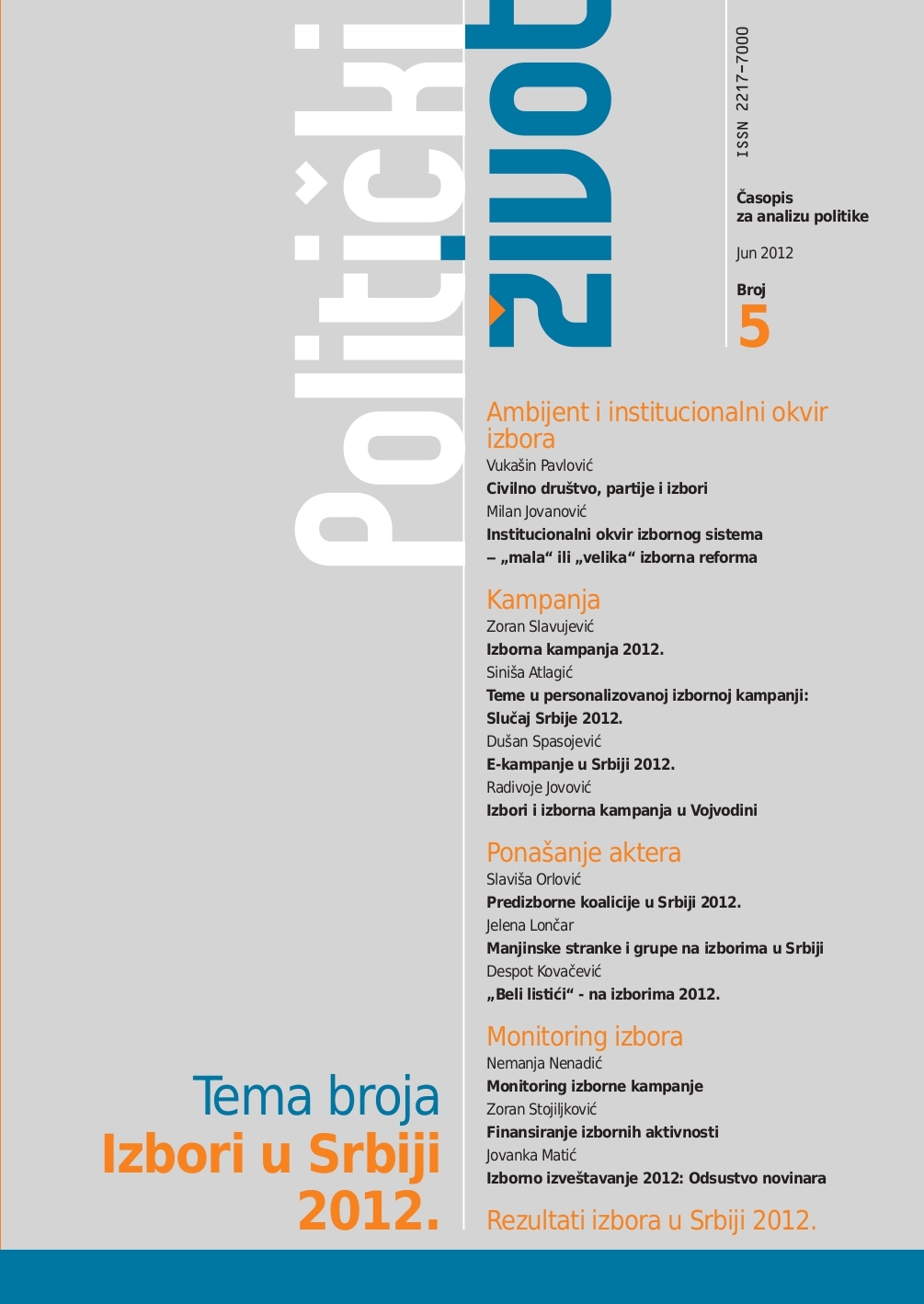Institucionlni okvir izbornog sistema ‒ „mala“ ili „velika“ izborna reforma
Institutional framework of electoral system: “small” or “big” reform
Author(s): Milan N. JovanovićSubject(s): Law, Constitution, Jurisprudence, Government/Political systems, Electoral systems, Politics and law
Published by: Fakultet političkih nauka Univerziteta u Beogradu
Keywords: Electoral reform; party system fragmentation; electoral register; party registration;
Summary/Abstract: It is evident that what have been done to improve the electoral system in the previous mandate is electoral reform and not trivial technical changes of electoral institutions and procedures. Changes in party registration, electoral register, party financing and electoral campaigns, and the deletion of provisions from the unconstitutional election laws that have enabled the parties to nominate and elect simultaneously, was reforms which have changed electoral system functioning. However, the key changes are lacking: a personalized selection of representatives, variable electoral threshold for coalitions, the introduction of multi-member districts, changing the size of the parliament. So, there was no „big” electoral reform. Veto players in this partial, incomplete reform process are political parties from parliamentary majority. Interestingly, in this slowdown and disposal of comprehensive electoral reforms they did not encounter resistance from the opposition. That is why the main shortcomings of the actual electoral model – MP depersonalization, fragmented party system and metropolisation of parliamentary representation – have still remained. Last electoral cycle has confirmed and strengthened these disadvantages. At the same time, the consequences are the best incentive to continue the process of electoral reform.
Journal: Politički život
- Issue Year: 2012
- Issue No: 5
- Page Range: 17-25
- Page Count: 9
- Language: Serbian

